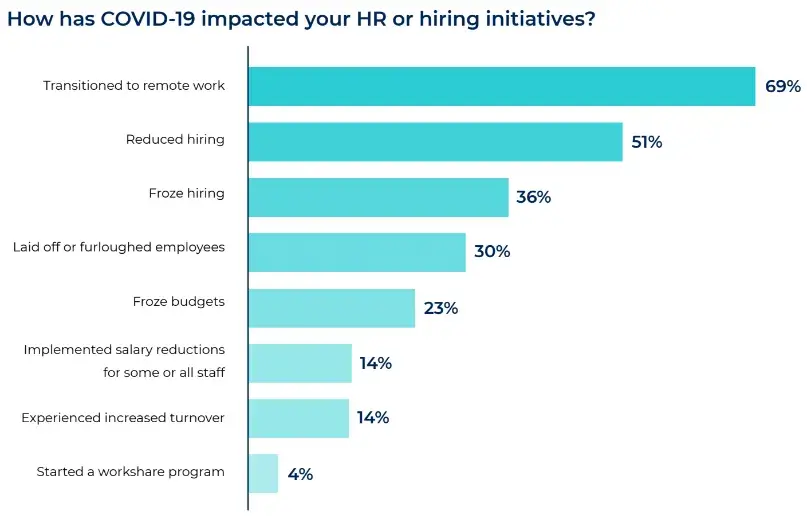Earlier this week, we released our 2020 Hiring Benchmark Report: The State of Hiring in a Year of Crisis. In the report, we reveal data from a survey of hiring professionals from across all industries. One thing we were particularly curious to find out was how organizations were impacted by COVID-19.
Across the globe, COVID-19 has affected the way organizations conduct business. From the economic and health impact, to the need to transition to remote work, organizations had to find ways to adapt. In our survey, we asked organizations what changes they had to make in order to weather the storm. Here’s what we found:

As a result of the COVID-19 pandemic, 69% of organizations had to transition to remote work in some capacity. 51% reduced hiring, while 36% froze hiring completely. Meanwhile, 30% had to make the difficult decision to either lay off or furlough employees.
From the financial side, 23% froze budgets, while 14% opted to implement salary reductions for some or all staff.
Just 14% experienced an increase in turnover. Finally, 4% opted to start a workshare program, an option in some states that enables employees to reduce hours while becoming eligible to collect partial unemployment.
All of these decisions represent major shifts in the way organizations have conducted business in the past, and many respondents had to engage in more than one of these tactics in order to stay afloat. The data also reinforces what we’ve seen in the labor market, with unemployment rising sharply after the major shut down in March of 2020.
With an influx of new job candidates on the market, the hiring landscape is also taking on a new shape. While we were previously in a candidate-driven market, today the dynamic has shifted. We explore the many repercussions of these changes in our 2020 Hiring Benchmark Report. Download your copy to view all the data on how hiring has adapted to the unique circumstances of 2020.





